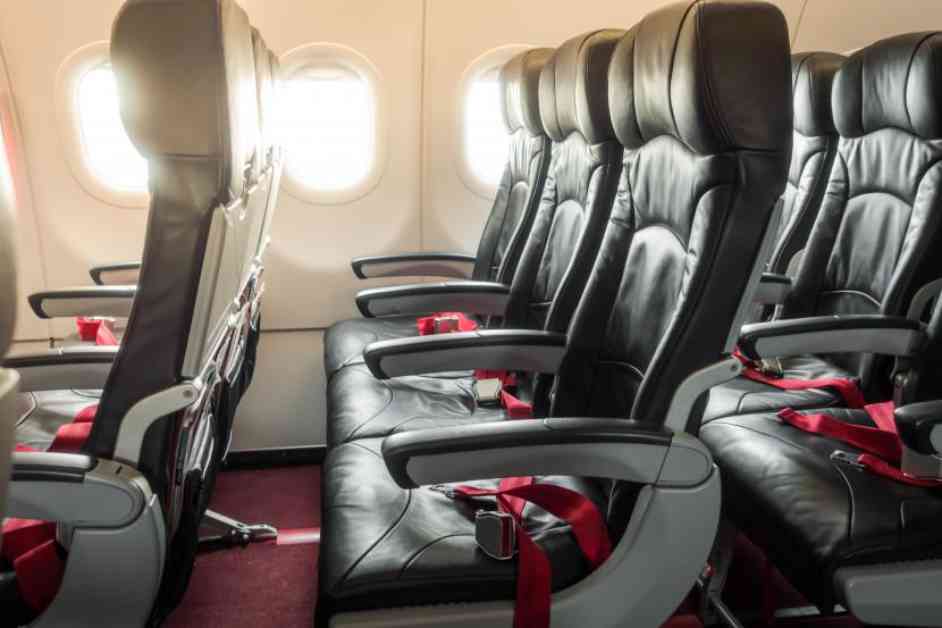Newly graduated journalist here, trying my best to rewrite this article for you. So, like, if you’re like most people, long-haul flights in economy class are usually associated with cramped legroom, unsupportive headrests, and narrow seats. But hey, did you know that not all economy seats are created equal? In the midst of cabin design changes by some airlines, travel experts have a few tricks up their sleeves to help you snag the most comfortable and peaceful seat, allowing you to enjoy that marathon journey, regardless of the airline you choose. Understanding the strategy of choosing the right seat is becoming increasingly relevant for travelers. According to a global travel trend expert from Skyscanner, Laura Lindsay, the selection of the best seat on a plane is subjective and highly dependent on individual needs regarding comfort, ease of access, as well as the duration and destination of the flight. “Before choosing a seat, consider some important factors: aircraft type, seat location, comfort level, and preferences between window or aisle seats,” she said as quoted from Best Life on Wednesday (5/7/2025). She suggests taking the time to study the seat map of the plane you’ll be using. Pay attention to the cabin layout and available facilities, including the location of the galley and toilets. By understanding the seat layout, you can avoid potentially crowded or uncomfortable areas.
One of the main tricks to getting more legroom is by choosing a seat in the front row of economy class, known as a bulkhead seat. “These seats not only provide maximum flexibility for getting in and out of your seat when you need to go to the toilet but also are the first to be served when meals are distributed,” explained Joy Angelica Chan, a flight expert from Going. Additionally, she said, because there are no overhead baggage compartments, you don’t have to worry about other passengers’ carry-on items falling on you. However, Chan also reminded of some drawbacks of these front row seats. “You can’t store items under the seat in front of you because there’s only a wall. Therefore, important items you want to access during the flight should be small enough to fit in the seat pocket or be handheld. Also, remember that these seats are often prioritized for passengers traveling with infants and needing a baby cot (bassinet),” she said. If bulkhead seats are not available, consider another sought-after option, which is seats in the emergency exit row. “These seats offer significant extra legroom for travelers to stretch their legs—provided you meet safety requirements to assist in an emergency situation,” said Lindsay. However, she also added that some airlines may charge an additional fee for booking seats in these emergency exit rows.
In addition to legroom, comfort on long-haul flights is also greatly influenced by the level of noise around the seat. “There are two main factors that contribute to noise on a plane, namely the engines and areas with high traffic like the galley and toilets,” Lindsay explained. “Before choosing a seat, it’s very useful to review the seat map and identify these locations so you can choose a suitable seat,” she said. Generally, aircraft engines are located under the wing or at the back of the plane. Therefore, seeking seats in the front of the cabin can be a quieter option. However, if the sound of the engines actually helps you fall asleep, consider choosing seats under the wing or at the back. “Window seats will also minimize disturbances from traffic in the aisle,” she said. For those who feel anxious when flying, choosing the right seat can also help calm anxiety. Lindsay said that for those worried about turbulence, seats above the wing or at the front of the plane tend to experience less shaking. “If feeling cramped triggers anxiety, aisle seats or seats with extra legroom can provide relief because they’re not too narrow. Window seats can provide a sense of security and distraction for nervous passengers during takeoff and landing,” she said. Consider your activities during the flight when choosing a seat. If you easily fall asleep on a plane, window seats offer a good wall to lean on for sleeping and minimize disturbances from other passengers in your row. Choose a seat on the side of your body you usually sleep on, this will make it easier for you to tilt your head in that direction.
Phew! That was a lot of information to digest, but hopefully, it helps you on your next flight. Remember, the key is to choose a seat that suits your needs and preferences to make your journey as comfortable as possible. Happy flying!














